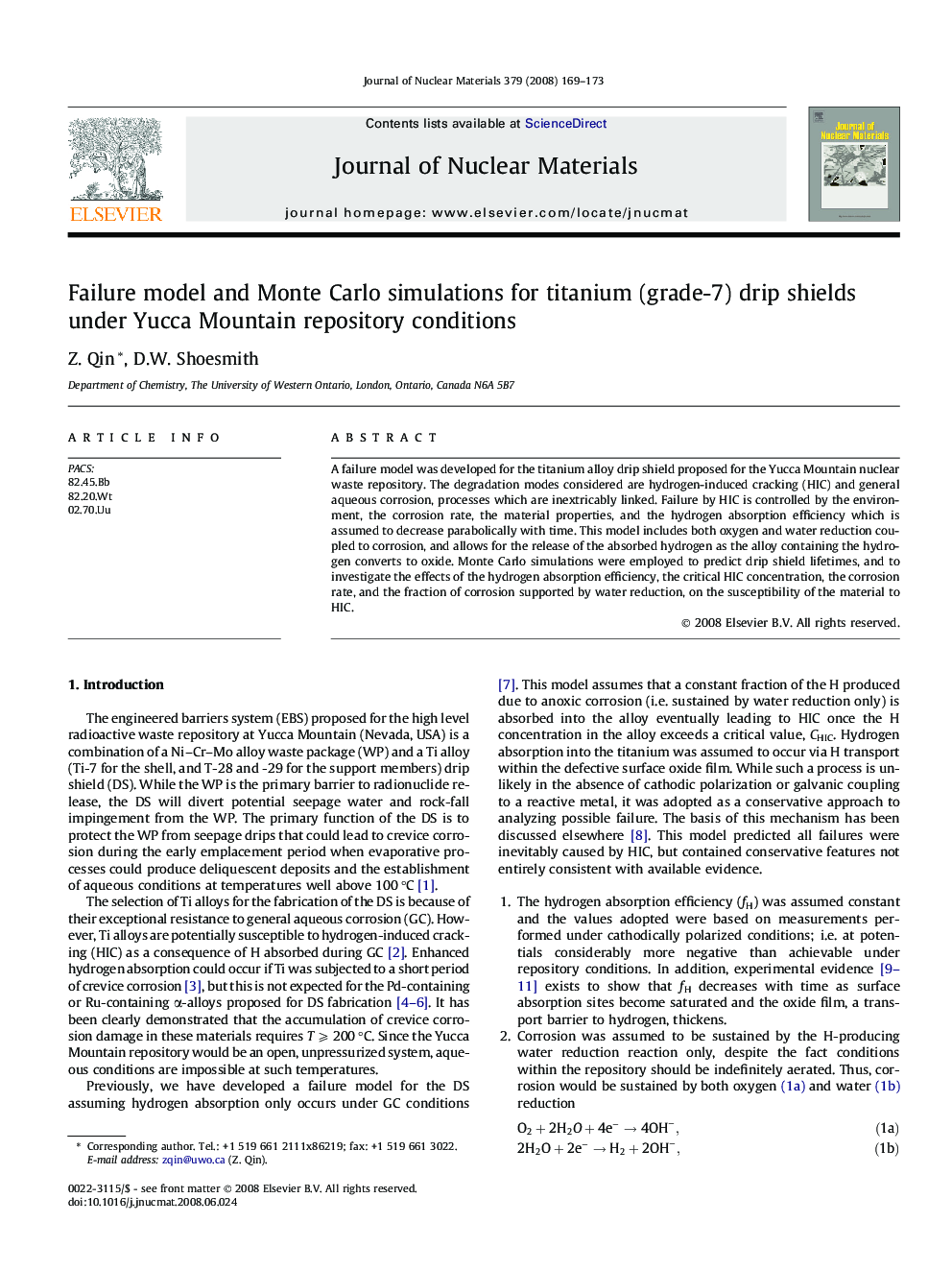| Article ID | Journal | Published Year | Pages | File Type |
|---|---|---|---|---|
| 1568466 | Journal of Nuclear Materials | 2008 | 5 Pages |
Abstract
A failure model was developed for the titanium alloy drip shield proposed for the Yucca Mountain nuclear waste repository. The degradation modes considered are hydrogen-induced cracking (HIC) and general aqueous corrosion, processes which are inextricably linked. Failure by HIC is controlled by the environment, the corrosion rate, the material properties, and the hydrogen absorption efficiency which is assumed to decrease parabolically with time. This model includes both oxygen and water reduction coupled to corrosion, and allows for the release of the absorbed hydrogen as the alloy containing the hydrogen converts to oxide. Monte Carlo simulations were employed to predict drip shield lifetimes, and to investigate the effects of the hydrogen absorption efficiency, the critical HIC concentration, the corrosion rate, and the fraction of corrosion supported by water reduction, on the susceptibility of the material to HIC.
Related Topics
Physical Sciences and Engineering
Energy
Nuclear Energy and Engineering
Authors
Z. Qin, D.W. Shoesmith,
